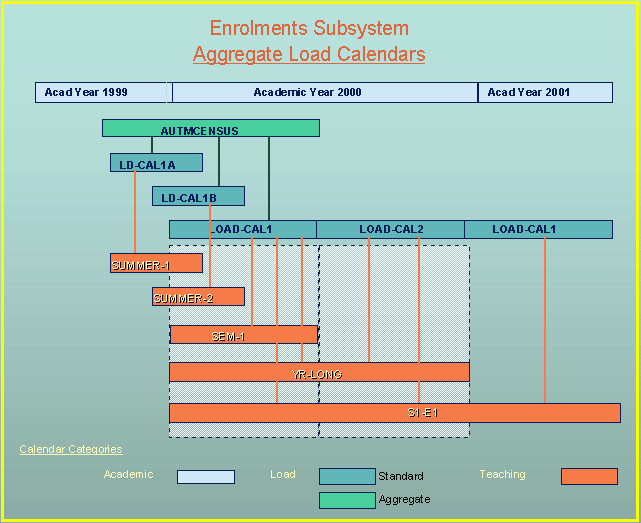This section describes:
NOTE: Many of the procedures described here are likely to be performed only by a specialist user.
Aggregate load calendars are calendars whose specific purpose is to group together two or more standard load calendars so that load can be considered for the combined calendars rather than for each individual calendar.
This allows standard load calendars to be created to measure student load in non-traditional teaching periods. Standard load calendars linked to an aggregate load calendar are still used for purposes such as fee assessment within a corresponding fee period, determination of load contribution of discontinued unit attempts and government statistical reporting. Standard load calendars not linked to aggregate calendars may be used for all load calculation purposes.
Aggregate load calendars can be used to group two or more standard load calendars for purposes such as:

This diagram illustrates how an aggregate load calendar (AUTMCENSUS) can be used to group a number of standard load calendars (LD-CAL1A, LD-CAL1B, LOAD-CAL1) to provide an aggregated view of load. Using the aggregate load calendar, attendance type, for example, can be determined at the autumn census date (31 March). Load under all three standard load calendars is summed and compared to the attendance type load ranges for AUTMCENSUS.
Note: Load apportionment is not recorded for aggregate load calendars. They 'collect' load from their subordinate standard load calendars.
There is a direct relationship between the load incurred by a student and their attendance type. Students enrol in a course offering option which is of a particular attendance type. They then enrol in units, each of which attracts a specified amount of load. The System calculates the load for a student in two ways for two distinct purposes.
Last modified on 18 August 2000